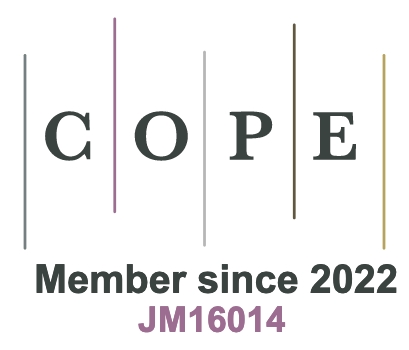REFERENCES
1. Chen, B. W. J.; Xu, L.; Mavrikakis, M. Computational methods in heterogeneous catalysis. Chem. Rev. 2021, 121, 1007-48.
2. Mahmoudi, H.; Mahmoudi, M.; Doustdar, O.; et al. A review of Fischer Tropsch synthesis process, mechanism, surface chemistry and catalyst formulation. Biofuels. Eng. 2017, 2, 11-31.
3. Ail, S. S.; Dasappa, S. Biomass to liquid transportation fuel via Fischer Tropsch synthesis – technology review and current scenario. Renew. Sust. Energ. Rev. 2016, 58, 267-86.
4. Schulz, H. Comparing Fischer-Tropsch synthesis on iron- and cobalt catalysts: the dynamics of structure and function. Stud. Surf. Sci. Catal. 2007, 163, 177-99.
5. Ma, W.; Jacobs, G.; Sparks, D. E.; Todic, B.; Bukur, D. B.; Davis, B. H. Quantitative comparison of iron and cobalt based catalysts for the Fischer-Tropsch synthesis under clean and poisoning conditions. Catal. Today. 2020, 343, 125-36.
6. Liu, Q. Y.; Shang, C.; Liu, Z. P. In. situ. active. site. for. Fe-catalyzed. Fischer–Tropsch. synthesis:. recent. progress. and. future. challenges. J. Phys. Chem. Lett. 2022, 13, 3342-52.
7. de Smit, E.; Cinquini, F.; Beale, A. M.; et al. Stability and reactivity of
8. Zhang, J.; Abbas, M.; Zhao, W.; Chen, J. Enhanced stability of a fused iron catalyst under realistic Fischer–Tropsch synthesis conditions: insights into the role of iron phases (
9. Yang, C.; Zhao, H.; Hou, Y.; Ma, D. Fe
10. Zhao, H.; Liu, J. X.; Yang, C.; et al. Synthesis of iron-carbide nanoparticles: identification of the active phase and mechanism of Fe-based Fischer–Tropsch synthesis. CCS. Chem. 2021, 3, 2712-24.
11. Cano, L. A.; Cagnoli, M. V.; Fellenz, N. A.; et al. Influence of the crystal size of iron active species on the activity and selectivity. Appl. Catal. A. Gen. 2010, 379, 105-10.
12. Torres Galvis, H. M.; Bitter, J. H.; Davidian, T.; Ruitenbeek, M.; Dugulan, A. I.; de Jong, K. P. Iron particle size effects for direct production of lower olefins from synthesis gas. J. Am. Chem. Soc. 2012, 134, 16207-15.
13. Park, J. C.; Yeo, S. C.; Chun, D. H.; et al. Highly activated K-doped iron carbide nanocatalysts designed by computational simulation for Fischer–Tropsch synthesis. J. Mater. Chem. A. 2014, 2, 14371-9.
14. Pham, T. H.; Qi, Y.; Yang, J.; et al. Insights into Hägg iron-carbide-catalyzed Fischer–Tropsch synthesis: suppression of CH
15. Song, N.; Cao, J.; Chen, B.; Qian, G.; Duan, X.; Zhou, X. CO adsorption and activation of
16. Chen, B.; Wang, D.; Duan, X.; et al. Charge-tuned CO activation over a
17. Li, T.; Wen, X.; Yang, Y.; Li, Y. W.; Jiao, H. Mechanistic aspects of CO activation and C–C bond formation on the Fe/C- and Fe-terminated Fe
18. Yin, J.; Liu, X.; Liu, X. W.; et al. Theoretical exploration of intrinsic facet-dependent CH
19. Zhang, X.; Wang, L.; Helwig, J.; et al. Artificial intelligence for science in quantum, atomistic, and continuum systems. arXiv2023, arXiv: 2307.08423. Available online: https://arxiv.org/abs/2307.08423. (accessed on 17 Mar 2025).
20. Ma, S.; Liu, Z. P. Machine learning for atomic simulation and activity prediction in heterogeneous catalysis: current status and future. ACS. Catal. 2020, 10, 13213-26.
21. Huang, S. D.; Shang, C.; Kang, P. L.; Zhang, X. J.; Liu, Z. P. LASP: fast global potential energy surface exploration. WIREs. Comput. Mol. Sci. 2019, 9, e1415.
22. Huang, S. D.; Shang, C.; Kang, P. L.; Liu, Z. P. Atomic structure of boron resolved using machine learning and global sampling. Chem. Sci. 2018, 9, 8644-55.
23. Chen, D.; Chen, L.; Zhao, Q. C.; Yang, Z. X.; Shang, C.; Liu, Z. P. Square-pyramidal subsurface oxygen[Ag
24. Liu, Q. Y.; Shang, C.; Liu, Z. P. In situ active site for CO activation in Fe-catalyzed Fischer-Tropsch synthesis from machine learning. J. Am. Chem. Soc. 2021, 143, 11109-20.
25. Liu, Q. Y.; Chen, D.; Shang, C.; Liu, Z. P. An optimal Fe–C coordination ensemble for hydrocarbon chain growth: a full Fischer–Tropsch synthesis mechanism from machine learning. Chem. Sci. 2023, 14, 9461-75.
26. van Steen, E.; Schulz, H. Polymerisation kinetics of the Fischer-Tropsch CO hydrogenation using iron and cobalt based catalysts. Appl. Catal. A. Gen. 1999, 186, 309-20.
27. Han, J.; Zhang, L.; Car, R.; Weinan, E. Deep potential: a general representation of a many-body potential energy surface. Commun. Comput. Phys. 2018, 23, 629-39.
28. Wang, H.; Zhang, L.; Han, J.; Weinan, E. DeePMD-kit: a deep learning package for many-body potential energy representation and molecular dynamics. Comput. Phys. Commun. 2018, 228, 178-84.
29. Zeng, J.; Zhang, D.; Lu, D.; et al. DeePMD-kit v2: a software package for deep potential models. J. Chem. Phys. 2023, 159, 054801.
30. DeePMD-kit. https://github.com/deepmodeling/deepmd-kit. (accessed on 2025-03-17).
31. Zhang, L.; Han, J.; Wang, H.; Saidi, W. A.; Car, R.; Weinan, E. End-to-end symmetry preserving inter-atomic potential energy model for finite and extended systems. arXiv2018, arXiv: 1805.09003. Available online: https://arxiv.org/abs/1805.09003. (accessed on 17 Mar 2025).
32. Hedman, D.; McLean, B.; Bichara, C.; Maruyama, S.; Larsson, J. A.; Ding, F. Dynamics of growing carbon nanotube interfaces probed by machine learning-enabled molecular simulations. Nat. Commun. 2024, 15, 4076.
33. Liu, J. C.; Luo, L.; Xiao, H.; Zhu, J.; He, Y.; Li, J. Metal affinity of support dictates sintering of gold catalysts. J. Am. Chem. Soc. 2022, 144, 20601-9.
34. Zhou, L.; Fu, X. P.; Wang, R.; et al. Dynamic phase transitions dictate the size effect and activity of supported gold catalysts. Sci. Adv. 2024, 10, eadr4145.
35. Hou, P.; Yu, Q.; Luo, F.; Liu, J. C. Reactant-induced dynamic active sites on Cu catalysts during the water - gas shift reaction. ACS. Catal. 2025, 15, 352-60.
36. Wu, J.; Chen, D.; Chen, J.; Wang, H. Structural and composition evolution of palladium catalyst for CO oxidation under steady-state reaction conditions. J. Phys. Chem. C. 2023, 127, 6262-70.
37. Zhang, Y.; Wang, H.; Chen, W.; et al. DP-GEN: a concurrent learning platform for the generation of reliable deep learning based potential energy models. Comput. Phys. Commun. 2020, 253, 107206.
38. Cheng, X.; Wu, C.; Xu, J.; Han, Y.; Xie, W.; Hu, P. Leveraging machine learning potentials for in-situ searching of active sites in heterogeneous catalysis. Precis. Chem. 2024, 2, 570-86.
39. Chanussot, L.; Das, A.; Goyal, S.; et al. Open Catalyst 2020 (OC20) dataset and community challenges. ACS. Catal. 2021, 11, 6059-72.
40. Tran, R.; Lan, J.; Shuaibi, M.; et al. The Open Catalyst 2022 (OC22) dataset and challenges for oxide electrocatalysts. ACS. Catal. 2023, 13, 3066-84.
41. Deng, B.; Zhong, P.; Jun, K.; et al. CHGNet as a pretrained universal neural network potential for charge-informed atomistic modelling. Nat. Mach. Intell. 2023, 5, 1031-41.
42. Zhang, D.; Liu, X.; Zhang, X.; et al. DPA-2: a large atomic model as a multi-task learner. npj. Comput. Mater. 2024, 10, 293.
43. DeepModeling Community. https://deepmodeling.com. (accessed on 2025-03-17).
44. Chen, M.; Guo, G. C.; He, L. Systematically improvable optimized atomic basis sets for ab initio calculations. J. Phys. Condens. Mat. 2010, 22, 445501.
45. Li, P.; Liu, X.; Chen, M.; et al. Large-scale ab initio simulations based on systematically improvable atomic basis. Comput. Mater. Sci. 2016, 112, 503-17.
46. Schlipf, M.; Gygi, F. Optimization algorithm for the generation of ONCV pseudopotentials. Comput. Phys. Commun. 2015, 196, 36-44.
47. SG15 ONCV Potentials. http://quantum-simulation.org/potentials/sg15_oncv. (accessed on 2025-03-17).
48. Perdew, J. P.; Burke, K.; Ernzerhof, M. Generalized gradient approximation made simple. Phys. Rev. Lett. 1996, 77, 3865.
49. Lin, P.; Ren, X.; He, L. Strategy for constructing compact numerical atomic orbital basis sets by incorporating the gradients of reference wavefunctions. Phys. Rev. B. 2021, 103, 235131.
50. Monkhorst, H. J.; Pack, J. D. Special points for Brillouin-zone integrations. Phys. Rev. B. 1976, 13, 5188.
51. Methfessel, M.; Paxton, A. T. High-precision sampling for Brillouin-zone integration in metals. Phys. Rev. B. 1989, 40, 3616.
52. Zhang, D.; Bi, H.; Dai, F. Z.; et al. Pretraining of attention-based deep learning potential model for molecular simulation. npj. Comput. Mater. 2024, 10, 94.
53. Vaswani, A.; Shazeer, N.; Parmar, N.; et al. Attention is all you need. arXiv2017, arXiv: 1706.03762. Available online: https://arxiv.org/abs/1706.03762. (accessed on 17 Mar 2025).
54. Henkelman, G.; Uberuaga, B. P.; Jónsson, H. A climbing image nudged elastic band method for finding saddle points and minimum energy paths. J. Chem. Phys. 2000, 113, 9901-4.
55. Henkelman, G.; Jónsson, H. Improved tangent estimate in the nudged elastic band method for finding minimum energy paths and saddle points. J. Chem. Phys. 2000, 113, 9978-85.
56. Henkelman, G.; Jónsson, H. A dimer method for finding saddle points on high dimensional potential surfaces using only first derivatives. J. Chem. Phys. 1999, 111, 7010-22.
57. Kästner, J.; Sherwood, P. Superlinearly converging dimer method for transition state search. J. Chem. Phys. 2008, 128, 014106.
58. Larsen, A. H.; Mortensen, J. J.; Blomqvist, J.; et al. The atomic simulation environment - a Python library for working with atoms. J. Phys. Condens. Mat. 2017, 29, 273002.
59. Hermes, E. D.; Sargsyan, K.; Najm, H. N.; Zádor, J. Accelerated saddle point refinement through full exploitation of partial hessian diagonalization. J. Chem. Theory. Comput. 2019, 15, 6536-49.
60. Hermes, E. D.; Sargsyan, K.; Najm, H. N.; Zádor, J. Sella, an open-source automation-friendly molecular saddle point optimizer. J. Chem. Theory. Comput. 2022, 18, 6974-88.
61. ATST-Tools. https://github.com/QuantumMisaka/ATST-Tools. (accessed on 2025-03-17).
62. Vilhelmsen, L. B.; Hammer, B. A genetic algorithm for first principles global structure optimization of supported nano structures. J. Chem. Phys. 2014, 141, 044711.
63. Zakaryan, H. A.; Kvashnin, A. G.; Oganov, A. R. Stable reconstruction of the (110) Surface and its role in pseudocapacitance of rutile-like RuO
64. Hinuma, Y.; Kamachi, T.; Hamamoto, N.; Takao, M.; Toyao, T.; Shimizu, K. Surface oxygen vacancy formation energy calculations in 34 orientations of
65. Momma, K.; Izumi, F. VESTA 3 for three-dimensional visualization of crystal, volumetric and morphology data. J. Appl. Cryst. 2011, 44, 1272-6.
66. Reuter, K.; Scheffler, M. Composition, structure, and stability of RuO
67. Reuter, K.; Scheffler, M. Composition and structure of the RuO
68. AIS-Square. DPA-2.2.0 pre-trained model. https://www.aissquare.com/models/detail?pageType=models&name=DPA-2.2.0-v3.0.0b3&id=272. (accessed on 2025-03-17).
69. AIS-Square. OpenLAM Project. https://www.aissquare.com/openlam. (accessed on 2025-03-17).
70. Kulichenko, M.; Nebgen, B.; Lubbers, N.; et al. Data generation for machine learning interatomic potentials and beyond. Chem. Rev. 2024, 124, 13681-714.
71. Broos, R. J. P.; Zijlstra, B.; Filot, I. A. W.; Hensen, E. J. M. Quantum-chemical DFT study of direct and H- and C-assisted CO dissociation on the
72. Zhao, Z. J.; Li, Z.; Cui, Y.; et al. Importance of metal-oxide interfaces in heterogeneous catalysis: a combined DFT, microkinetic, and experimental study of water-gas shift on Au/MgO. J. Catal. 2017, 345, 157-69.
73. Chen, C.; Zuo, Y.; Ye, W.; Li, X.; Ong, S. P. Learning properties of ordered and disordered materials from multi-fidelity data. Nat. Comp. Sci. 2021, 1, 46-53.
74. Xie, J.; Yang, J.; Dugulan, A. I.; et al. Size and promoter effects in supported iron Fischer-Tropsch catalysts: insights from experiment and theory. ACS. Catal. 2016, 6, 3147-57.
75. Zhao, S.; Liu, X. W.; Huo, C. F.; Li, Y. W.; Wang, J.; Jiao, H. Surface morphology of Hägg iron carbide (
76. Morgenstern, K.; Rosenfeld, G.; Comsa, G. Decay of two-dimensional Ag islands on Ag(111). Phys. Rev. Lett. 1996, 76, 2113.







